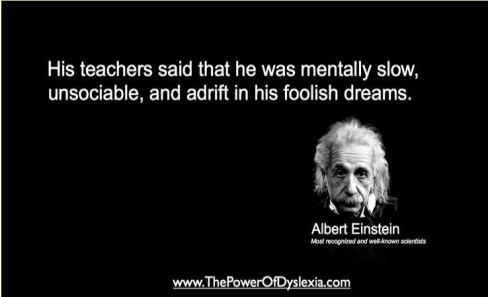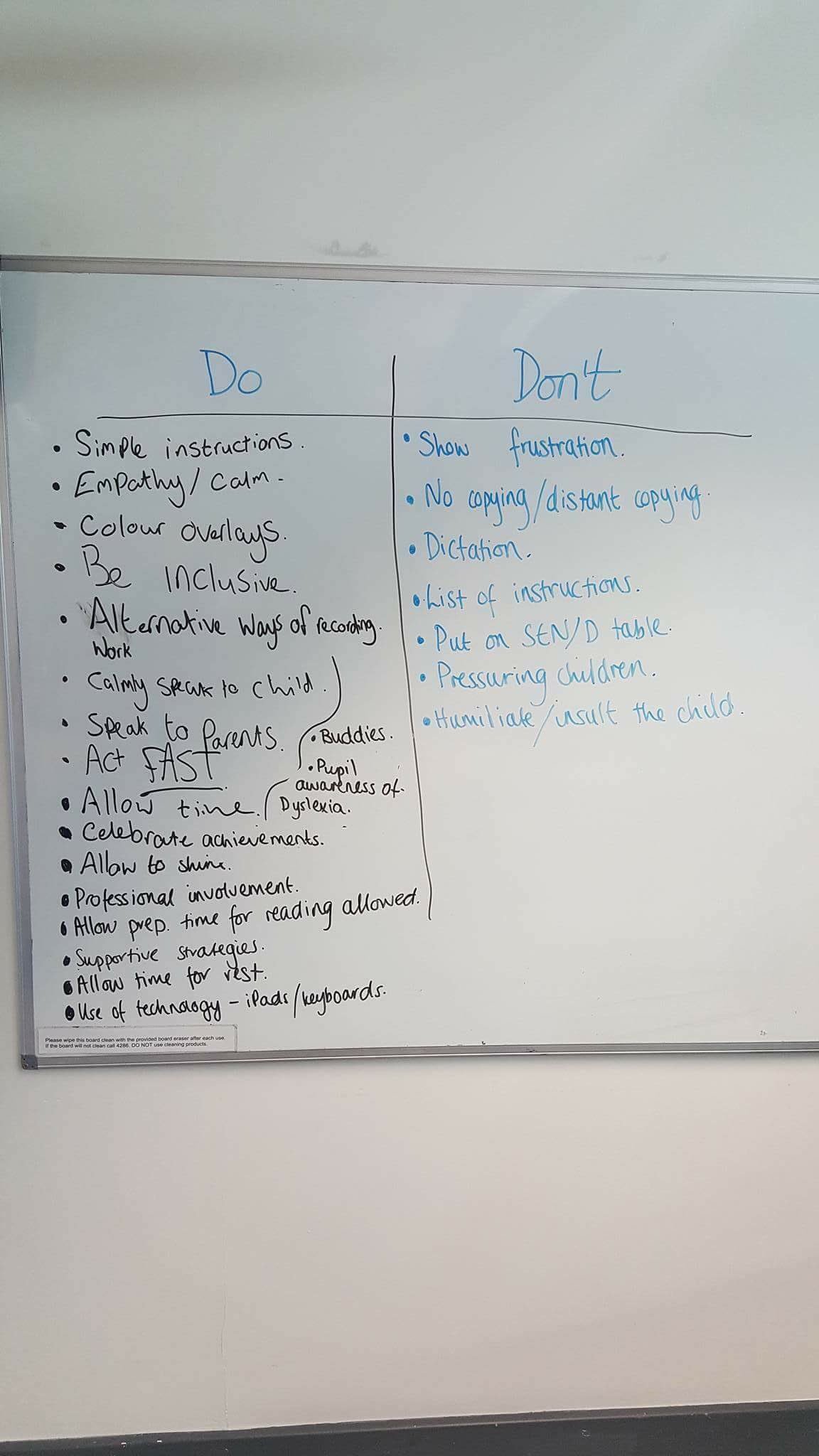TS5b: have a secure understanding of how a range of factors can inhibit pupils’ ability to learn, and how best to overcome these
TS5d: have a clear understanding of the needs of all pupils, including those with special educational needs; those of high ability; those with English as an additional language; those with disabilities; and be able to use and evaluate distinctive teaching approaches to engage and support them.

What is dyslexia?
It’s a “specific learning difficulty”; it causes problems with certain abilities used for learning, such as reading and writing. Unlike a learning difficulty, intelligence isn’t affected.
–> DYS (difficulty) LEXIS (language) …Difficulty with the way language is processed.
What might dyslexic children have difficulty with?
- reading
- comprehension
- handwriting
- punctuation
- concentration
- organisation
- remembering sequences of words
- mispronouncing common words
- reversing letters/sounds in words
–> It is a continuum. Not all people with dyslexia will experience the same difficulties/all the difficulties mentioned above.
–> With dyslexia, the difficulties persist despite quality first teaching.
The statistics
– 1 in 25 severely affected… Up to 1 in 10 less severely (therefore there could be 2 or 3 pupils with dyslexia in every class)

Creating a dyslexia-friendly classroom
- provide all children with coloured overlays (leave out on tables as common classroom practice as opposed to singling out as different)
- print out all resources/letters/documents on buff coloured paper (including those to be sent home)
- change the colour of the background when presenting on IWB (black on white is particularly difficult to read)
What does good/bad practice look like?

